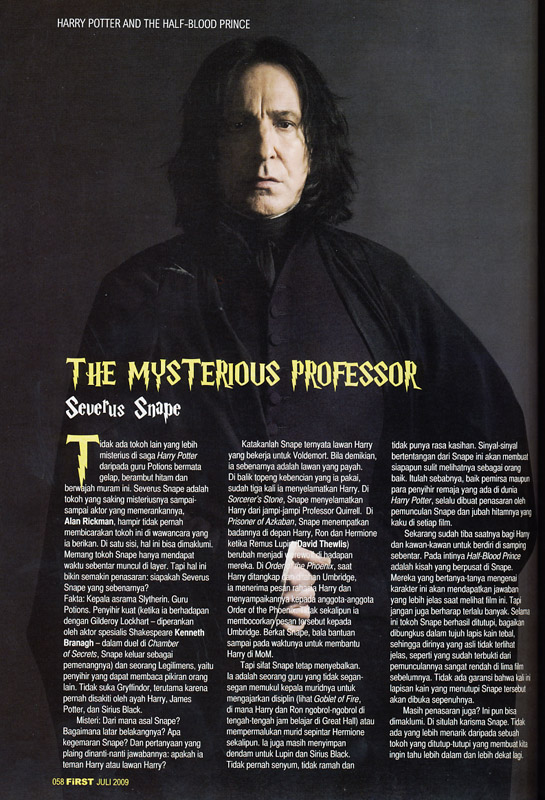The Prisoner Of Azkaban: A Tale Of Betrayal And Redemption
Step into the enchanting world of Harry Potter as we explore “The Prisoner of Azkaban: A Tale of Betrayal and Redemption.” This beloved installment in J.K. Rowling’s magical series takes readers on a thrilling journey filled with twists, turns, and the complexities of loyalty. Get ready to immerse yourself in a tale that will keep you on the edge of your seat, while also delving deep into themes of trust, forgiveness, and the power of second chances.
In “The Prisoner of Azkaban,” Harry Potter discovers that not everything is as it seems. As he returns to Hogwarts School of Witchcraft and Wizardry for his third year, he learns of the notorious Sirius Black, a convicted murderer who has escaped from the wizarding prison, Azkaban. The plot thickens when Harry discovers that Black may have been involved in the betrayal of his parents. With the help of his loyal friends Ron and Hermione, Harry embarks on a quest to uncover the truth behind Black’s escape and his connection to his own dark past. Along the way, he encounters magical creatures, time travel, and the true meaning of friendship. This captivating story of betrayal and redemption will leave you captivated from start to finish, as Harry learns that not everything is black and white, and that sometimes, the line between good and evil can be blurred. So grab your broomstick and prepare for a spellbinding adventure that will keep you guessing until the very end.

The Prisoner of Azkaban: A Tale of Betrayal and Redemption
The Prisoner of Azkaban, the third installment in the beloved Harry Potter series by J.K. Rowling, is a captivating tale of betrayal and redemption. In this thrilling novel, Harry Potter finds himself facing new challenges and uncovering secrets that will change his life forever. With its intricate plot, rich character development, and powerful themes, The Prisoner of Azkaban continues to captivate readers of all ages.
The Mysterious Escape of Sirius Black
In The Prisoner of Azkaban, the story takes an unexpected turn with the escape of Sirius Black, a notorious wizard who was believed to be responsible for the betrayal of Harry’s parents. As Harry delves deeper into the mystery surrounding Sirius, he discovers that things are not always as they seem. The revelation of Sirius Black’s true intentions adds a layer of complexity to the story, forcing Harry to question the nature of loyalty and the power of forgiveness.
This twist in the plot highlights the theme of betrayal, as Harry grapples with the betrayal of his parents by someone he trusted. It also sets the stage for the theme of redemption, as Sirius Black’s character undergoes a transformation throughout the course of the novel. The Prisoner of Azkaban explores the idea that people can change, and that even those who have made mistakes in the past can find redemption.
The Dementors: Agents of Fear
One of the most memorable elements of The Prisoner of Azkaban is the introduction of the Dementors, dark creatures that feed on human happiness and leave their victims in a state of despair. These spectral beings serve as a physical representation of fear and trauma, haunting both the characters and the readers alike.
The presence of the Dementors adds a sense of danger and urgency to the story, as Harry and his friends must learn to confront their deepest fears in order to overcome the challenges they face. Rowling’s portrayal of the Dementors also provides an opportunity for readers to reflect on the nature of fear and its impact on individuals’ lives.
The Marauder’s Map: A Tool for Redemption
In his quest for answers, Harry stumbles upon the Marauder’s Map, a powerful magical artifact that reveals the whereabouts of everyone within Hogwarts. This discovery not only aids Harry in his pursuit of the truth but also serves as a symbol of redemption.
The Marauder’s Map was created by James Potter, Sirius Black, Remus Lupin, and Peter Pettigrew during their time at Hogwarts. It was initially used for mischief, but Harry soon realizes its potential as a tool for redemption. By using the map to understand the actions and motivations of those around him, Harry is able to uncover the truth about Sirius Black and ultimately help in his redemption.
The Power of Friendship and Loyalty
Throughout The Prisoner of Azkaban, the theme of friendship and loyalty remains at the forefront. Harry’s unwavering loyalty to his friends, Ron and Hermione, is tested as he grapples with the truth about Sirius Black and his own past. Despite the challenges they face, their friendship remains steadfast, with each character offering support and guidance to one another.
Additionally, the introduction of new characters such as Remus Lupin and Sirius Black further explores the power of friendship and loyalty. Despite their troubled pasts, these characters form a bond with Harry and become important figures in his life. Their loyalty and willingness to protect Harry demonstrate the transformative power of friendship.
The Shrieking Shack: A Place of Redemption
The Shrieking Shack, a mysterious building located within the grounds of Hogwarts, becomes a pivotal location in The Prisoner of Azkaban. It is here that the truth about Sirius Black and the events surrounding Harry’s parents’ betrayal come to light. The Shrieking Shack serves as a symbolic space of redemption, where past mistakes can be confronted and forgiveness can be found.
Within the confines of the Shrieking Shack, characters have the opportunity to confront their fears and grapple with the consequences of their actions. It is through these intense and emotional moments that the path to redemption is paved, ultimately leading to a resolution that brings closure to the story.
A Time-Turner: Rewriting the Past
Another fascinating element in The Prisoner of Azkaban is the introduction of the Time-Turner, a device that allows the user to travel back in time. This plot device adds a layer of complexity to the story, as Harry and Hermione utilize the Time-Turner to alter events and rewrite the past.
The concept of time travel raises thought-provoking questions about fate, free will, and the consequences of altering the past. It also serves as a metaphor for the potential for redemption and second chances. Through the use of the Time-Turner, characters are able to rewrite their own narratives and find redemption in the process.
The Lessons of Betrayal and Redemption
The Prisoner of Azkaban serves as a powerful reminder that betrayal and redemption are not always black and white. It explores the complexities of human nature, the power of forgiveness, and the importance of loyalty and friendship. Through the captivating storyline and well-developed characters, J.K. Rowling weaves a tale that resonates with readers and leaves them contemplating the themes long after the final page is turned.
As readers delve into The Prisoner of Azkaban, they are transported to a world where betrayal and redemption intertwine, reminding us that even in the darkest of times, there is always hope for redemption.
Key Takeaways: The Prisoner of Azkaban – A Tale of Betrayal and Redemption
- The Prisoner of Azkaban is the third book in the Harry Potter series.
- The story revolves around Harry Potter, who learns about the betrayal of his parents by their trusted friend, Peter Pettigrew.
- Harry forms an unlikely alliance with Sirius Black, the titular prisoner, who is believed to be responsible for betraying Harry’s parents.
- The theme of redemption is prominent in the book, as characters like Sirius Black and Severus Snape are given the opportunity to redeem themselves.
- The Prisoner of Azkaban explores the complexities of trust, friendship, and the consequences of betrayal.
Frequently Asked Questions
1. What is the main theme of “The Prisoner of Azkaban: A Tale of Betrayal and Redemption”?
The main theme of “The Prisoner of Azkaban: A Tale of Betrayal and Redemption” is the exploration of betrayal and redemption. Throughout the book, various characters experience betrayal in different forms, whether it’s betrayal by friends, family, or even society. The story delves into the consequences of these betrayals and highlights the journey towards redemption and forgiveness.
In the book, the character of Sirius Black is wrongly accused of betraying Harry’s parents and spends years in Azkaban, the wizarding prison. As the truth unfolds, the theme of redemption becomes prominent as Sirius seeks to clear his name and make amends for past actions. Harry, too, navigates a path of forgiveness and redemption as he grapples with his own emotions and learns to trust again.
2. How does “The Prisoner of Azkaban” explore the concept of betrayal?
“The Prisoner of Azkaban” explores the concept of betrayal through various plot twists and character arcs. One of the key instances of betrayal is the revelation that Peter Pettigrew, a supposedly loyal friend of Harry’s parents, was the one who betrayed them to Voldemort. This betrayal leads to the deaths of Harry’s parents and sets the events of the series in motion.
The theme of betrayal is also exemplified through the actions of Professor Snape, who is revealed to have been working as a spy for Voldemort. Snape’s double-agent status adds layers of betrayal and mistrust throughout the story, keeping readers guessing about his true loyalties. Overall, the book delves deep into the complexities of betrayal and its far-reaching consequences.
3. How does “The Prisoner of Azkaban” explore the theme of redemption?
“The Prisoner of Azkaban” explores the theme of redemption through the character arcs of Sirius Black and Severus Snape. Sirius, who was wrongly imprisoned in Azkaban for betraying Harry’s parents, seeks redemption by helping Harry and his friends throughout the book. He risks his own life to protect them and proves his loyalty.
Severus Snape, on the other hand, is a character with a complex past. Throughout the series, he is portrayed as a bitter and harsh teacher, but in “The Prisoner of Azkaban,” his true motivations are revealed. Snape’s actions are shown to be driven by a desire for redemption and to protect Harry from the looming threat of Voldemort.
4. What are some key moments of betrayal in “The Prisoner of Azkaban”?
One key moment of betrayal in “The Prisoner of Azkaban” is the reveal that Peter Pettigrew, who had been believed dead, is actually alive and responsible for betraying Harry’s parents to Voldemort. This revelation shocks Harry and his friends and sets off a chain of events that shape the rest of the series.
Another moment of betrayal is when Professor Lupin, who had been a trusted mentor to Harry, reveals that he is a werewolf. This revelation deeply upsets Harry, as he feels betrayed by someone he had looked up to and trusted. The book is filled with these moments of betrayal, adding depth and complexity to the story.
5. How does “The Prisoner of Azkaban” provide a message of redemption and forgiveness?
“The Prisoner of Azkaban” provides a message of redemption and forgiveness through the character development of Sirius Black. Despite being wrongly accused and imprisoned, Sirius chooses to forgive those who had betrayed him in the past. He also seeks forgiveness for his own actions as he helps Harry and his friends.
The book emphasizes the importance of forgiveness as a means of moving forward and healing from past betrayals. It shows that redemption is possible, even in the darkest of circumstances, and that forgiveness can lead to personal growth and the mending of broken relationships.

Harry Potter and the Prisoner of Azkaban – the truth about Peter Pettigrew reveald part 2 (HD)
Final Summary: The Prisoner of Azkaban – A Tale of Betrayal and Redemption
As we come to the end of this captivating journey through the pages of “The Prisoner of Azkaban,” we are reminded once again of the power of betrayal and the possibility of redemption. J.K. Rowling masterfully weaves a tale that keeps us on the edge of our seats, eagerly turning each page to uncover the secrets of the past and the hope for a brighter future.
Throughout the novel, we witness the devastating betrayal of Sirius Black, who was once believed to be a loyal friend but is revealed to be a traitor. This betrayal shatters the trust of our beloved characters, leaving them questioning their own judgment and the true nature of those around them. However, amidst the darkness, Rowling skillfully plants the seeds of redemption. We see the transformation of Severus Snape, a character who has been portrayed as cold and aloof, but who ultimately reveals his true loyalty and sacrifices himself for the greater good.
In conclusion, “The Prisoner of Azkaban” is not just a story of magic and adventure, but a profound exploration of the complexities of human nature. It reminds us that betrayal can come from the most unexpected places, but it also offers the glimmer of hope that redemption is possible, even in the darkest of times. Rowling’s storytelling prowess and her ability to capture the essence of human emotions make this novel a timeless classic that will continue to captivate readers for generations to come.






